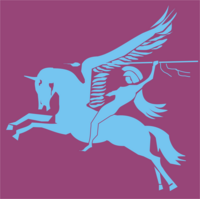| 7th (Light Infantry) Parachute Battalion | |
|---|---|
 Cap badge of the Parachute Regiment | |
| Active | 1942–1948 |
| Country | |
| Branch | |
| Type | Airborne forces |
| Role | Parachute infantry |
| Size | Battalion |
| Part of | 3rd Parachute Brigade 5th Parachute Brigade |
| Nickname(s) | Red Devils[1] |
| Motto(s) | Utrinque Paratus (Latin for Ready for Anything) |
| Engagements | Capture of the Caen canal and Orne river bridges Operation Varsity |
| Commanders | |
| Notable commanders | Lieutenant Colonel RG Pine-Coffin DSO MC |
| Insignia | |
| The emblem of the Second World War British Army Airborne Forces, Bellerophon riding the flying horse Pegasus |  |
The 7th (Light Infantry) Parachute Battalion was an airborne infantry battalion of the Parachute Regiment, formed by the British Army during the Second World War. The battalion was raised in November 1942 by the conversion of the 10th Battalion, Somerset Light Infantry to parachute duties. It was initially assigned to the 3rd Parachute Brigade, part of 1st Airborne Division, but moved to the 5th Parachute Brigade, alongside the 12th and 13th Parachute battalions, of the 6th Airborne Division soon afterwards.
The battalion saw combat on D-Day in Operation Tonga on 6 June 1944, the Battle of the Bulge in December and the River Rhine crossing in March 1945. After the war ended in Europe, the battalion, with the 5th Parachute Brigade, was sent to the Far East to undertake operations against the Japanese Empire. However, the war ended just after the men had started jungle training. Moving by sea, the battalion took part in the reoccupation of Malaya and Singapore. Problems in Java resulted in the battalion being sent to Batavia (Jakarta) to control the unrest, until relieved by a Dutch force.
The battalion then rejoined the 6th Airborne Division in Palestine. Post war army reductions saw the battalion amalgamated with the 17th Parachute Battalion, but still remaining the 7th Parachute Battalion. But further reductions eventually saw the battalion disbanded.
- ^ Otway 1990, p. 88.